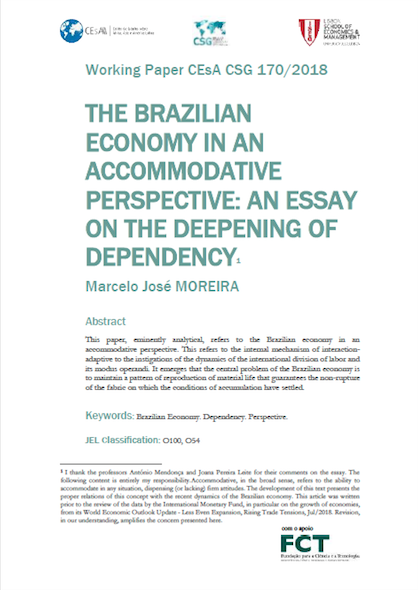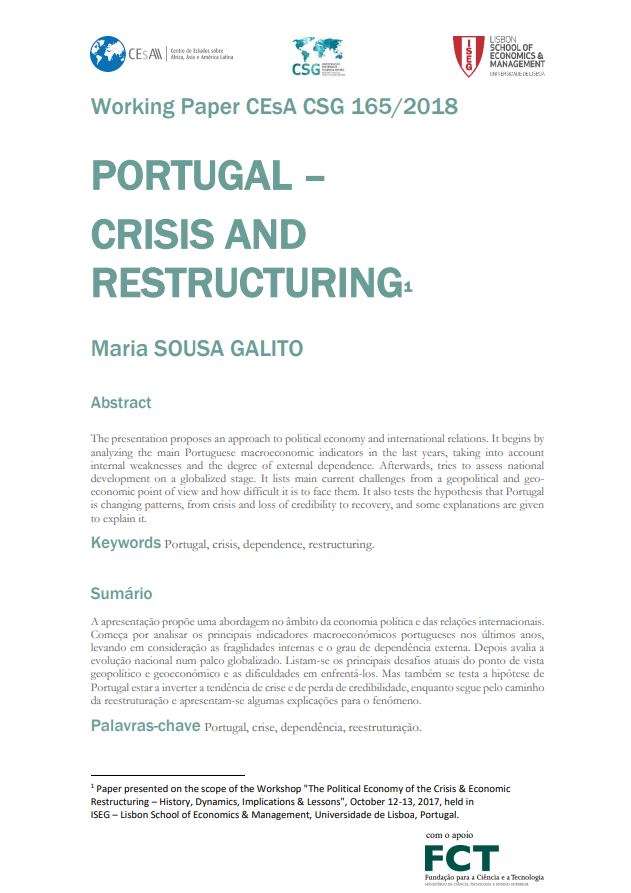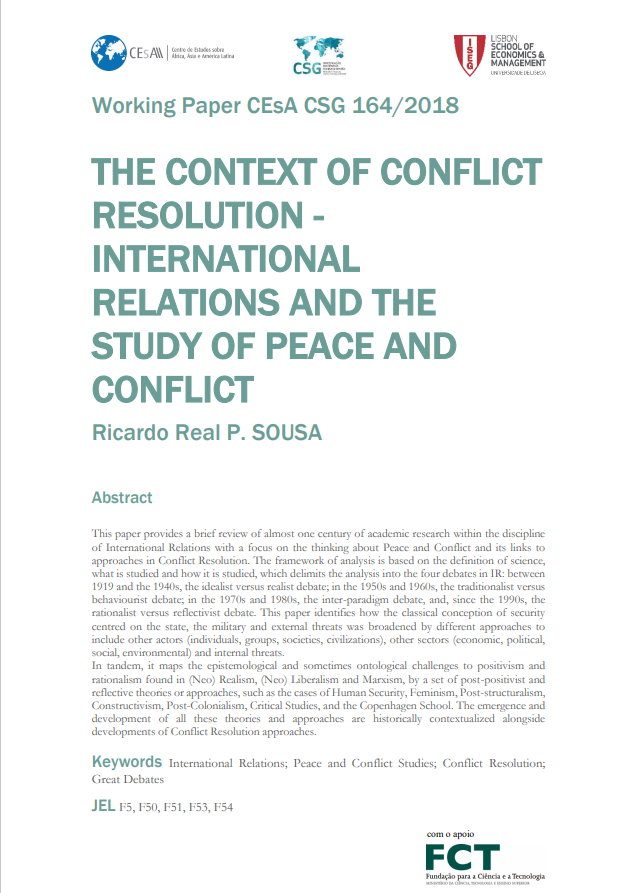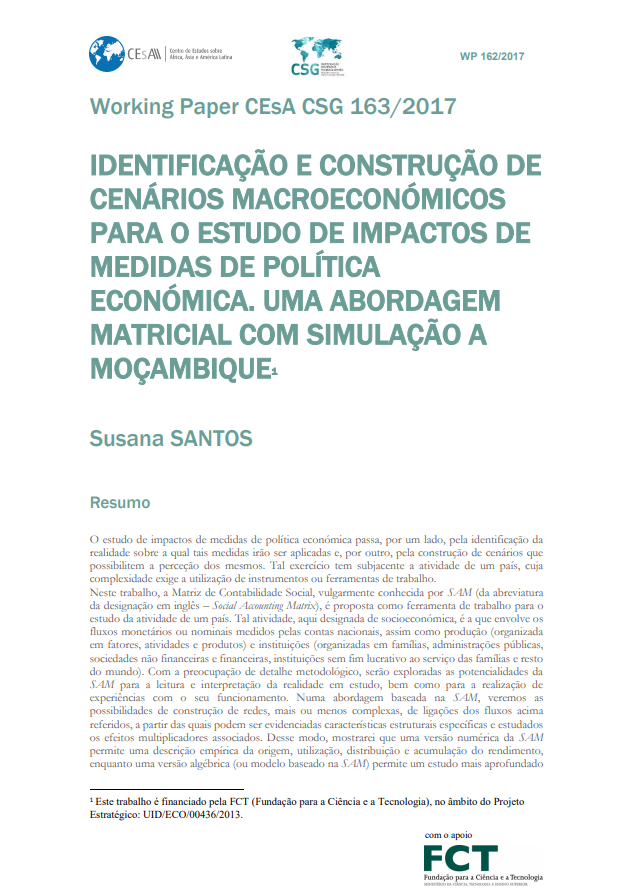Development Economics and Policy

Working Paper 171/2018: Promoting Private Sector for Development: The rise of blended finance in EU aid architecture
Abstract:
Since 2007, the EU has been pushing for blended finance to mobilise private sector for development. This is a novel and controversial financial policy coinciding with the growing debate on “beyond aid” and the emergence of new financial tools and actors that are actively engaged with the global development agenda. Since the 1960s, grants and concessional loans (or more simply, aid) have been the dominant type of development finance provided by the EU, together with debt relief and the costs of technical assistance. But aid is no longer the main source of development finance for most developing countries, now replaced by private financial flows: foreign direct investment (FDI), remittances and philanthropy. Business-led economic growth is at the core of the 2030 global development agenda seen as the primary driver of investments, jobs creation and production of goods and services. In consequence, the EU is moving to combine aid with other public and private resources (blended finance) to catalyse and leverage additional funds from the private sector. Promoting private sector for development: the rise of blended finance in EU aid architecture will critically analyse the emergence and evolution of EU blended finance to support the private sector to deliver the Sustainable Development Goals (SGDs) by 2030 and the potential implications for EU development cooperation.
Quotation:
Mah, Luís (2018). “Promoting private sector for development : the rise of blended finance in EU aid architecture”. Instituto Superior de Economia e Gestão – CEsA /CSG – Documentos de Trabalho nº 171/2018.

Working Paper 170/2018: The Brazilian Economy in an Accommodative Perspective: An essay on the deepening of dependency
Abstract:
This article, eminently analytical, refers to the brazilian economy in an accommodative perspective. This refers to the internal mechanism of interactionadaptive to the instigations of the dynamics of the international division of labor and its modus operandi. It emerges that the central problem of the Brazilian economy is to maintain a pattern of reproduction of material life that guarantees the non-rupture of the fabric on which the conditions of accumulation have settled. This document aims to propose a way of analyzing the Brazilian economy and its relationship with the recent dynamic of the global economy. In order to do so, one takes into account its dependence trajectory with this dynamics and proposes to analyze it in a perspective of non-structural alteration of the components that support it and, as a hypothesis, of the way these components interact. The components, for the purposes of this essay, are: exports and imports of goods (here called the Decisive Activity), reproduction of the labor force (here considered, as a proxy, for the joint analysis of the unemployment rate and average real income in minimum wages) and the investment rate (as a percentage of GDP).
Quotation:
Moreira, Marcelo José (2018). “The Brazilian Economy in an Accommodative Perspective: An essay on the deepening of dependency”. Instituto Superior de Economia e Gestão – CEsA /CSG – Documentos de Trabalho nº 170/2018.

Working Paper 165/2018: Portugal: crisis and restructuring
Abstract:
Portugal is a southwestern country with a strategic triangle including two archipelagos and a territorial slice of the Iberian Peninsula. It’s a State-member of the European Union (EU) since 1986. After 2008 faced financial and economic restrain and asked for financial external help from Troika (IMF, European Commission and European Central Bank) between 2011/14. Taking that in mind, Portugal: crisis and restructuring contextualizes Portugal’s present situation and its trends for the last ten or less years. The first chapter analysis main macroeconomic indicators of Portugal, including the GDP, imports and exports specific performance, consumer price index, net lending/ borrowing by institutional sector, and sovereign ratings from the biggest international agencies. The second chapter evaluates some of the country’s inner fragilities, such as lack of industrialization and unbalanced GVA and Employment between major sectors (agriculture, services and industry), Risk of Poverty, Unemployment Rates and major demographic trends. The third chapter focus on external dependence; studies indicators in percentage of the GDP, like the Liquid External Debt, Emigrants’ Remittances, Public Transferences from and for the EU, but also the Geographical Distribution of Exports and Imports of Goods by Regions and by countries, and of Foreign Direct Investment (FDI) by Countries. The fourth chapter examines the overseas AICEP network, the Global Peace Index, The Travel & Tourism Competitiveness Index and Portuguese indicators like the revenue and number of bed nights by country of origin. A final chapter has a summarized critical assessment about the hypothesis of the EU becoming a federation and Portugal’s part in it. The presentation proposes an approach to political economy and international relations. It begins by analyzing the main Portuguese macroeconomic indicators in the last years, taking into account internal weaknesses and the degree of external dependence. Afterwards, tries to assess national development on a globalized stage. It lists main current challenges from a geopolitical and geo-economic point of view and how difficult it is to face them. It also tests the hypothesis that Portugal is changing patterns, from crisis and loss of credibility to recovery, and some explanations are given to explain it.
Quotation:
Galito, Maria Sousa (2018). “Portugal: crisis and restructuring”. Instituto Superior de Economia e Gestão – CEsA/ CSG – Documentos de Trabalho nº 165/2018.

Working Paper 164/2018: The Context of Conflict Resolution: International relations and the study of peace and conflict
Abstract:
The Context of Conflict Resolution: International relations and the study of peace and conflict provides a brief review of almost one century of academic research within the discipline of International Relations with a focus on the thinking about Peace and Conflict and its links to approaches in Conflict Resolution. The framework of analysis is based on the definition of science, what is studied and how it is studied, which delimits the analysis into the four debates in IR: between 1919 and the 1940s, the idealist versus realist debate; in the 1950s and 1960s, the traditionalist versus behaviourist debate; in the 1970s and 1980s, the inter-paradigm debate, and, since the 1990s, the rationalist versus reflectivist debate. This paper identifies how the classical conception of security centred on the state, the military and external threats was broadened by different approaches to include other actors (individuals, groups, societies, civilizations), other sectors (economic, political, social, environmental) and internal threats. In tandem, it maps the epistemological and sometimes ontological challenges to positivism and rationalism found in (Neo) Realism, (Neo) Liberalism and Marxism, by a set of post-positivist and reflective theories or approaches, such as the cases of Human Security, Feminism, Post-structuralism, Constructivism, Post-Colonialism, Critical Studies, and the Copenhagen School. The emergence and development of all these theories and approaches are historically contextualized alongside developments of Conflict Resolution approaches.
Quotation:
Sousa, Ricardo Real P. (2018). “The Context of Conflict Resolution: International relations and the study of peace and conflict”. Instituto Superior de Economia e Gestão – CEsA/ CSG Documentos de Trabalho nº 164/2018.

Working Paper 163/2017: Identificação e Construção de Cenários Macroeconómicos para o Estudo de Impactos de Medidas de Política Económica. Uma abordagem matricial com simulação a Moçambique
Abstract:
The study of the impacts of economic policy measures involves, on the one hand, the identification of the reality on which such measures will be applied and, on the other hand, the construction of scenarios that allow their perception. This exercise is based on the activity of a country, whose complexity requires the use of instruments or work tools. Identificação e Construção de Cenários Macroeconómicos para o Estudo de Impactos de Medidas de Política Económica. Uma abordagem matricial com simulação a Moçambique, the Social Accounting Matrix, commonly known as SAM (from the abbreviation of the name in English – Social Accounting Matrix), is proposed as a working tool for the study of the activity of a country. Such activity, here designated as socio-economic, involves monetary or nominal flows measured by national accounts, as well as production (organized into factors, activities and products) and institutions (organized into households, public administrations, non-financial and financial corporations, non-profit institutions serving families and the rest of the world). With a concern for methodological detail, the potential of SAM will be explored for the reading and interpretation of the reality under study, as well as for carrying out experiments with its operation. In an approach based on SAM, we will see the possibilities of building networks, more or less complex, of connections of the flows mentioned above, from which specific structural characteristics can be highlighted and the associated multiplier effects studied. In this way, I will show that a numerical version of the SAM allows an empirical description of the origin, use, distribution and accumulation of income, while an algebraic version (or model based on the SAM) allows for a more in-depth study of the multiplier effects (or impacts) associated with changes in these flows, caused by the adoption of policy measures, for example. I will exemplify such potentialities of SAM, giving special attention to the functional and institutional distribution of income, through the construction and analysis of two scenarios involving changes in the remuneration of production factors and in the income of institutions. Such an application will allow the identification of the relevant role of production factor accounts (from SAM), as they establish the link between income generation and the corresponding distribution and use. I will also emphasize the importance of a matrix approach in the identification and construction of macroeconomic scenarios in the study of impacts of economic policy measures, highlighting the complementary details that an InputOutput Matrix (IOM) can add. An application to the case of Mozambique in 2015 will accompany the presentation. In this application we will often talk about simulation due to the unavailability of information regarding all the flows worked.
Quotation:
Santos, Susana (2017). “Identificação e construção de cenários macroeconómicos para o estudo de impactos de medidas de política económica. Uma abordagem matricial com simulação a Moçambique”. Instituto Superior de Economia e Gestão – CEsA/ CSG – Documentos de Trabalho nº 163/2017.





